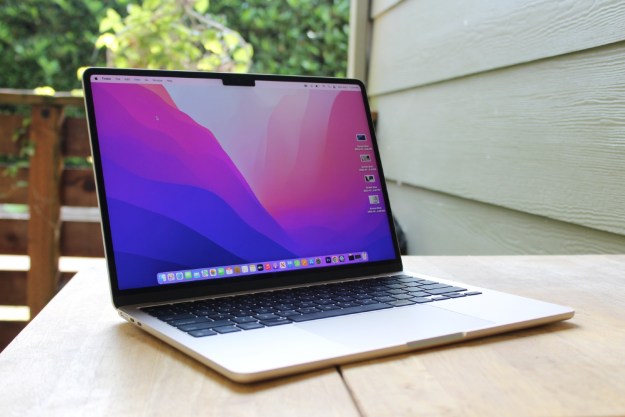In the past, gamers have had little reason to consider a Mac configuration for gaming. But according to Apple itself, that could change in the future. The Mac maker confirmed its plans to get serious about PC gaming in a recent interview, which could potentially make it more appealing to gamers.
“Of course, you can imagine the pride of some of the GPU folks and imagining, ‘Hey, wouldn’t it be great if it hits a broader set of those really intense gamers,’” Apple vice president of platform architecture Tim Milet mused in an interview with Tom’s Guide. “It’s a natural place for us to be looking, to be working closely with our Metal team and our Developer team. We love the challenge.”
Apple’s embrace of PC gaming comes on the strengths of its M1 processor. The company had initially announced a timeline to transition away from Intel CPUs on the Mac at WWDC 2020. In the same interview, Apple executives stated that before the company could enter the gaming space, it had to make the Mac powerful and power-efficient.

In order to make the M1 processor a compelling switch for the company and devoted Mac fans, Bob Borchers, Apple vice president of worldwide product marketing, said that Macs have to retain strong battery life and deliver solid performance with Rosetta for emulation to make the transition from Intel CPUs as seamless as possible. With the 13-inch MacBook Pro delivering a stated battery life of 20 hours — Apple nearly doubled what was previously possible on a comparable Intel build — as well as subsequent reviews of the laptop that showed performance was no slouch, Apple is now setting a third goal for its M-series processors: Bringing gaming to the Mac.
Like Apple’s A-series processors on the iPhones and iPads that have turned the company’s smartphones and tablets into very capable portable consoles for casual gaming on the go, the M-series Mac CPUs combine ARM processing cores with custom integrated graphics cores. This is different from traditional PC gaming systems, which oftentimes are outfitted with powerful discrete graphics cards, like Nvidia’s GeForce RTX 3000 series or rival AMD’s Radeon RX 6000 series. Apple will take the contrarian approach here, eschewing more powerful discrete GPUs for integrated graphics with the M-series.
However, with rumors swirling that future iterations of the M-series chips could come with as many as 16 or 32 graphics cores, Apple’s venture into gaming shouldn’t come as too big of a surprise. Gaming apps, after all, became a big catalyst for the iPhone’s early success when Apple brought the App Store to its smartphones. Apple likely wants to repeat history for the Mac. The 32-core M-series chipset was previously rumored for a future revision of the Mac Pro desktop, which if accurate, could radically transform Apple’s pro-grade workstation into a monster gaming rig.
Apple’s push into gaming also appears to be a natural evolution of the company’s business strategy. After years of investing in hardware sales, Apple is now looking to grow its services, which includes iCloud subscription plans, App Store and in-app purchases, Apple TV+ streaming, Apple Music, Apple News+, and more. Bringing gaming to the Mac would only grow the App Store catalog on the Mac and generate more revenue for the company.
It’s unclear what Apple’s long-term strategy for PC gaming on a Mac will be. Whether Apple will try to repeat the success of the iPhone by bringing casual, yet highly immersive gaming experiences to the Mac with a number of inexpensive titles or if it will work with developers to port AAA titles that are available on Windows platforms is unknown. Either way, the potential success of gaming on a Mac that’s powered by an M-series chipset should come as a credible threat to Intel — which is also developing its own discrete graphics cards — as well as GPU makers Nvidia and AMD.
Editors' Recommendations
- If you love Amazon’s Fallout, play the series’ best games on Game Pass and PS Plus next
- Why Apple’s M3 Ultra could be an absolute monster
- Why you should buy a MacBook Pro instead of a MacBook Air
- The method to Apple Arcade’s madness? ‘Bring us an incredible game’
- Apple quietly backtracks on the MacBook Air’s biggest issue



